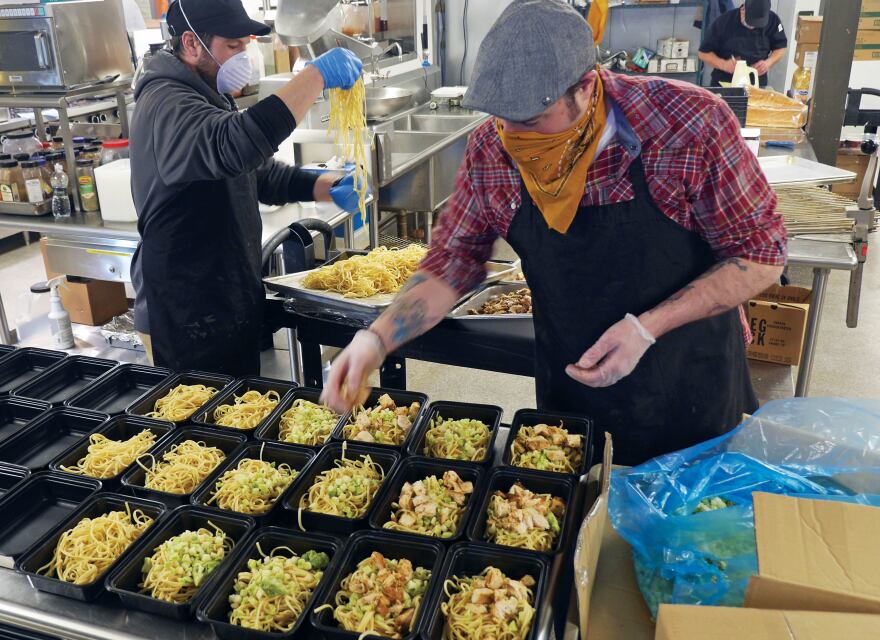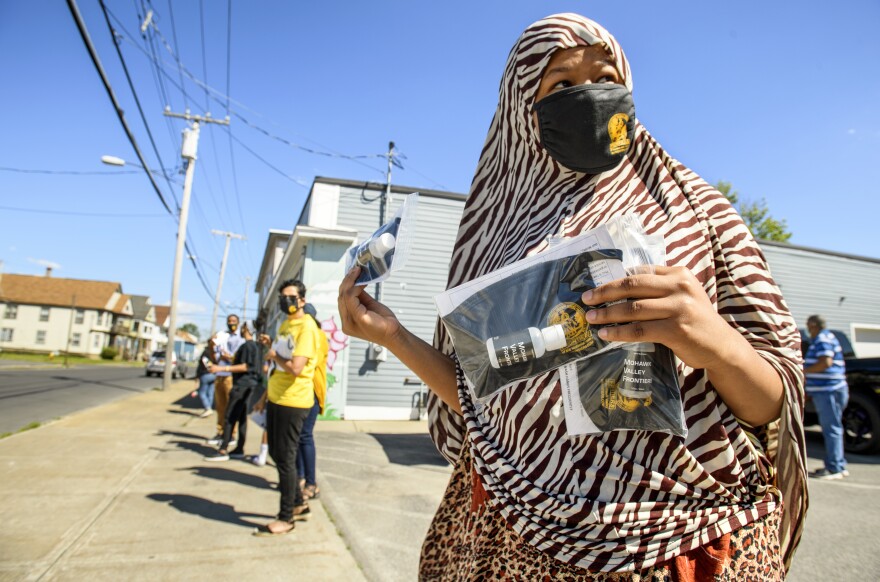As healthcare workers were dealing with the earthquake that was the Coronavirus, nonprofit organizations in central and northern New York were trying to address the aftershocks.
"The addiction rates went up, a lot of homelessness as a result, we’ve seen an uptick in child abuse, domestic violence, gun violence," said Alicia Dicks, the president and CEO of the Community Foundation of Herkimer and Oneida Counties.
Vera House Executive Director Randi Bregman, a nonprofit that works with domestic and sexual assault survivors, said in her thirty years at the organization she's never seen anything like 2020.

"The nature of the calls was profoundly different," Bregman said. "There weren’t any quick calls [like] can you tell me how to get this resource. Everybody was dealing with multiple, complex problems, great intensity and emotional need in the calls - people who were calling us from closets because it was the only way for them to get away from the abuser, and our staff just trying to keep up with the incredible demand."
What made matters even more complicated was that these nonprofits were trying to serve the community and put out their own fires. It was in many ways a perfect storm. Their services were needed more than ever at the same time that revenue streams like government contracts were drying up.
Rescue Mission CEO Dan Sieburg said at one point they had to lay off 285 of their employees in part because the nonprofit's thrift stores, which provide a large amount of its funding, were forced to close.
"We had to look at this from multiple angles: how do we continue to provide the life-saving services of shelter, food, and clothing, and then how do we then pay for it, which led us to massive layoffs, and then scrambling to see what legislation was going to come out, and then as the PPP [Paycheck Protection Program] loan came out, we rehired," Sieburg said. "All of this is happening within months, and days, and weeks."

Multiple area nonprofits say the federal government's Paycheck Protection Program loans, which were forgiven, saved much of their workforce, but even with that lifeline Dicks said every nonprofit suffered the loss of valuable talent.
But, Bregman said it wasn't all bad. As demand surged, her team had to collaborate like never before, breaking down silos that previously existed.
"So, somebody who works in development or administration or education usually doesn’t do direct service, but our staff from all parts of the organization took shelter shifts, answered the crisis line, answered the new chat service,," Bregman said. "So, we saw people team together to make sure the needs were met however we had to meet them."
Dicks said that has happened not only within nonprofits but between them as well.
"I’ve seen a might of effort for collaboration, which has really kind of built a good path for our community moving forward," She said. "A lot of nonprofits have realized nobody can do this alone, we’ve really got to do this together."

While each of these nonprofit leaders acknowledge that they will likely be addressing the aftermath of this health crisis for some time to come, Peter Dunn, president and CEO of the Central New York Community Foundation, thinks they are up to the challenge. Dunn said his organization partnered with other nonprofits and local governments to create a community support fund last year. Together, they were able to raise $2 million and send it to organizations serving the community all before 2020 was over.
"I think as a community that we can be proud of our nonprofit partners about their resiliency and adaptability in a time of extreme stress and the community coming together in short order in a collaborative way is really affirming," Dunn said. "Knowing that we have nonprofits even under times of great stress rising to meet the moment, I would say that’s the silver lining from last year."








